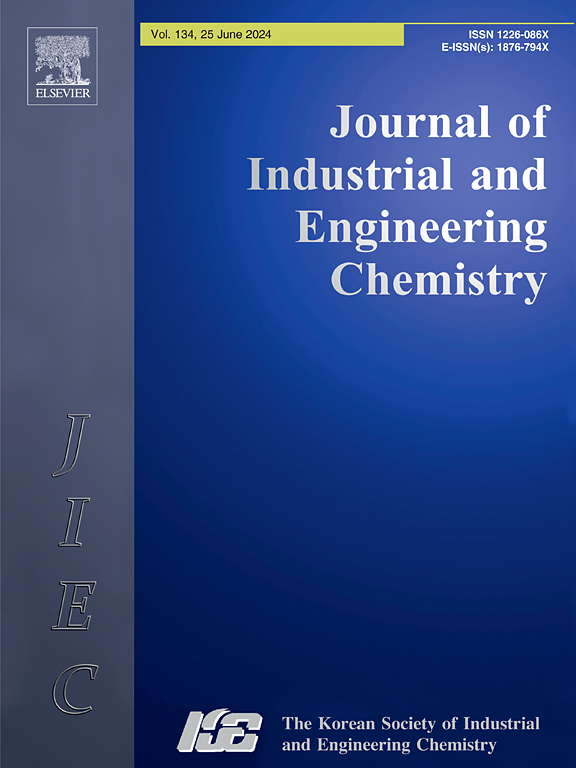Effect of reaction temperatures on optical properties of clove buds derived carbon dots for targeting nucleolus
IF 5.9
3区 工程技术
Q1 CHEMISTRY, MULTIDISCIPLINARY
Journal of Industrial and Engineering Chemistry
Pub Date : 2025-01-25
DOI:10.1016/j.jiec.2024.07.006
引用次数: 0
Abstract
This work pacts with a simple and environmentally friendly hydrothermal method to synthesize clove buds-derived carbon dots (CCDs) at different temperatures. Five CCDs samples were synthesized at different reaction temperatures ranging from 120 °C to 200 °C, respectively. Using UV–Visible (UV–Vis) and fluorescence spectroscopy (FL), the optical characteristics of CCDs made at various temperatures were examined and compared. The results show that the optical properties of prepared carbon dots (CDs) are significantly influenced by the temperature of carbonization. The cytocompatibility and hemolysis studies of optimized CCDs were performed to understand their interaction in the biological environment. The free radical scavenging capability of CDs was also explored. Further, in vitro cellular imaging of optimized CCDs200 was performed which shows strong and multicolour emission when excited with different laser sources. Interestingly, CDs are capable of brightening up RNA-rich nucleoli. Testing using ribonuclease digestion validates the localization of the CCDs in the nucleolus. Further, intracellular stability and good counterstaining compatibility feature them as a promising fluorescence probe for nucleolus imaging. Therefore, we have explored medicinal plant fruits as a carbon precursor for the synthesis of CDs without using any modifier which can be a potential candidate for multicolour nucleolus imaging and free radical scavenging applications.

反应温度对丁香芽衍生的用于靶向核仁的碳点光学特性的影响
本文章由计算机程序翻译,如有差异,请以英文原文为准。
求助全文
约1分钟内获得全文
求助全文
来源期刊
CiteScore
10.40
自引率
6.60%
发文量
639
审稿时长
29 days
期刊介绍:
Journal of Industrial and Engineering Chemistry is published monthly in English by the Korean Society of Industrial and Engineering Chemistry. JIEC brings together multidisciplinary interests in one journal and is to disseminate information on all aspects of research and development in industrial and engineering chemistry. Contributions in the form of research articles, short communications, notes and reviews are considered for publication. The editors welcome original contributions that have not been and are not to be published elsewhere. Instruction to authors and a manuscript submissions form are printed at the end of each issue. Bulk reprints of individual articles can be ordered. This publication is partially supported by Korea Research Foundation and the Korean Federation of Science and Technology Societies.

 求助内容:
求助内容: 应助结果提醒方式:
应助结果提醒方式:


